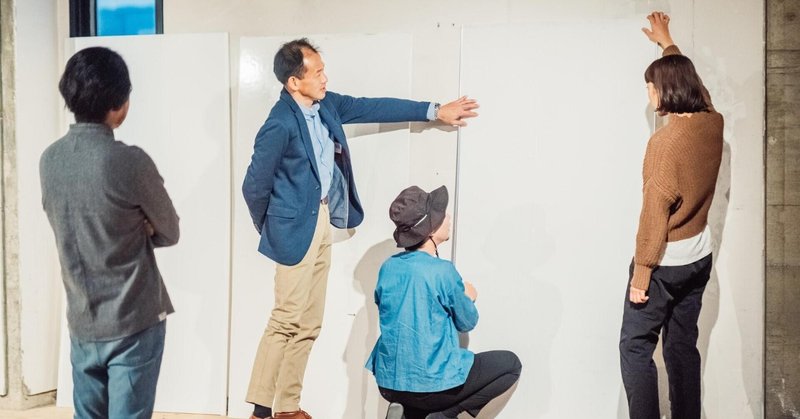
ideaboard® Series: Product Development Story #9_Partners | GK Kyoto
In December 2019, NKC Nakanishi Metal Works Co., Ltd. (referred to as NKC in the following) launched their new whiteboard, “ideaboard®.” Unraveled by the project members themselves, this series records the story of how the ideaboard was brought to life, and into ours.
Following the past eight articles covering our interview with Riku Nagasaki, developer of ideaboard and head of “KAIMEN” (the business design team reporting directly to the president at NKC), we now move on to the external partners with whom KAIMEN collaborated during the course of ideaboard’s product development.
We first met with Hisashi Yamamoto and Yuki Ishida, each producer, and designer of GK Kyoto, a design agency that also happens to be Nagasaki’s former workplace. Here, we discover how a whiteboard-like product, soon to be one of the prototypes of the ideaboard, was being used at the agency.
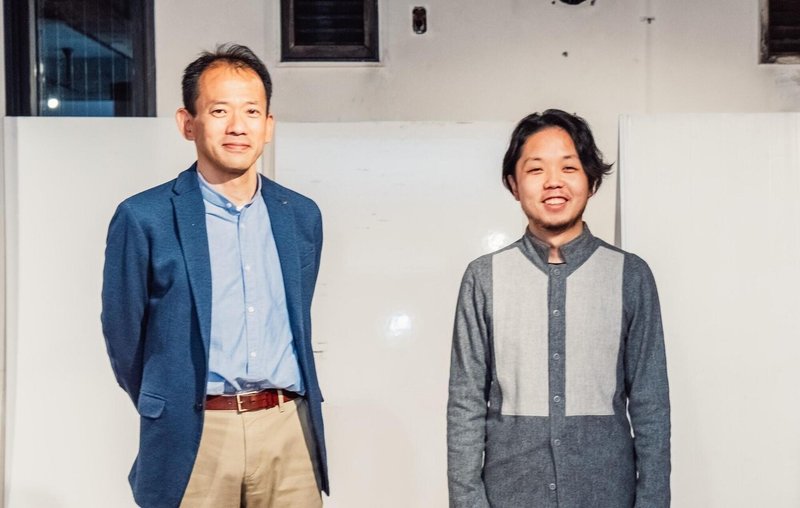
(Left) Hisashi YAMAMOTO
GK Kyoto Design Department Ⅱ Producer
(Right) Yuki ISHIDA
GK Kyoto Design Department Ⅰ Designer
1. A preference in the office: portable plain boards over whiteboards
ーFirst, please tell us what kind of work you normally do.
Yamamoto: I guess I am a jack of all trades. My job title says “producer,” but in the end, it’s all about acquiring work and connecting people together. It’s been roughly 20 years since GK Kyoto has presented its services as “business directorship design services.” We want our clients to recognize the value of the design process itself, not only the shapes and colors we produce. In order to do so, my main job these days is connecting ideas and people inside the office.
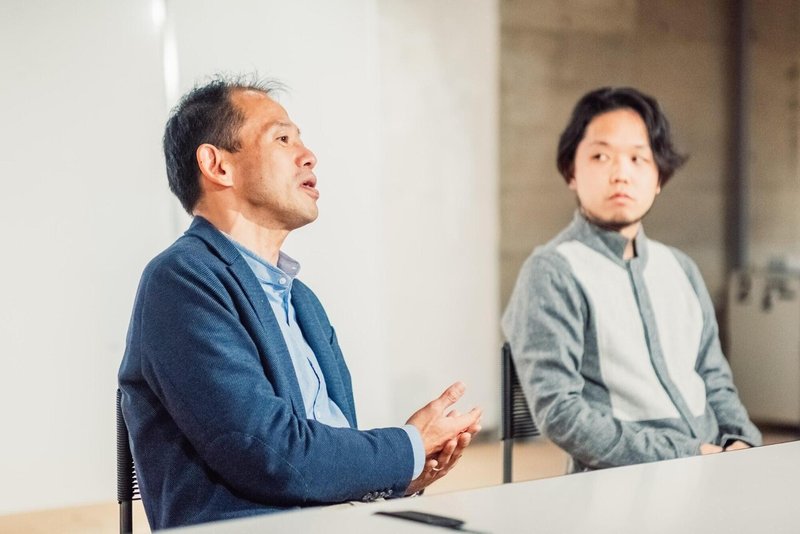
Yamamoto: Our company consists mainly of designers, so I would say the only “business management professionals” we have are the several staff working in the accounting and general affairs departments.
I myself usually work for product design. Designing jetskis was a long-term job of mine. In America, each household owns its own jetski for summer leisure. It’s a product that sells tens of thousands a year and is quite a big deal. I was transferred to the states and played a role in establishing the Atlanta office.
Ishida: I’m still one of the men working on-site, under producers like Yamamoto-san. Replacing one of the members now assigned in America, I joined KAIMEN in 2020.
ーI heard there weren’t whiteboards at the office. Wasn’t there a culture of using them?
Yamamoto: Not necessarily. We used A0 size foam boards—punching holes in them to make handles, pasting tape in grid-like patterns—altering them to fit our needs. At the time, we moved from place to place, gathering in different places for each project—a style similar to what we now call “free address workspaces.” The idea of dragging a whiteboard to each place, every time was a bit tiring.
However, I believe the main issue of using a whiteboard was that they couldn’t be saved. Contrary to a whiteboard—a product fundamentally based on the notion of “erasing previous content before usage”— panels and boards allow the user to write and paste endless content, as well as easily store it close by, just as it is. Since each of us juggled multiple projects simultaneously, we found it convenient to simply pull one board out, and work on each project from there.
Back then, it was a time when people believed “the best of ideas are thought of after cudgeling one’s brains.” The A0 size foam board was a way to visualize the whole thinking process as much as it was the result. For our generation of producers, it wasn’t rare to be called in by our bosses to “fill up the boards by next morning” and brainstorm throughout the night.
Ishida: We still have this tendency to each use a board and save it, so you can imagine how it keeps accumulating. Actually, the first thing we find ourselves doing at each big cleaning event is taking off the documents and post-its from the used project boards. You do feel the history when you find a 20~30-year-old caricature or a sketch of a product/service before its development.

ーI’ve heard improvements were already being made during the time you were still using a foam core board.
Yamamoto: Firstly, foam core boards are expensive, and easily break or become tainted. So we initially thought of replacing them with cheap corriboards. Cheap and disposable, they were easy to use and worked great at first. However, after time, they would start to bend, become unstable, and consequently fall over. So one of our colleagues secured it by using aluminum c channels—our first “framed-corriboard.”
Joining our agency right around that time, Nagasaki was the one who used it most. Indeed, he was the one that started writing on it, when others would rather stick to pasting documents or post-its. It’s still very common to hear conversations fly back and forth in the office like, “Fetch the board,” “Put up those sketches,” or “Make sure we have a board on hand.”
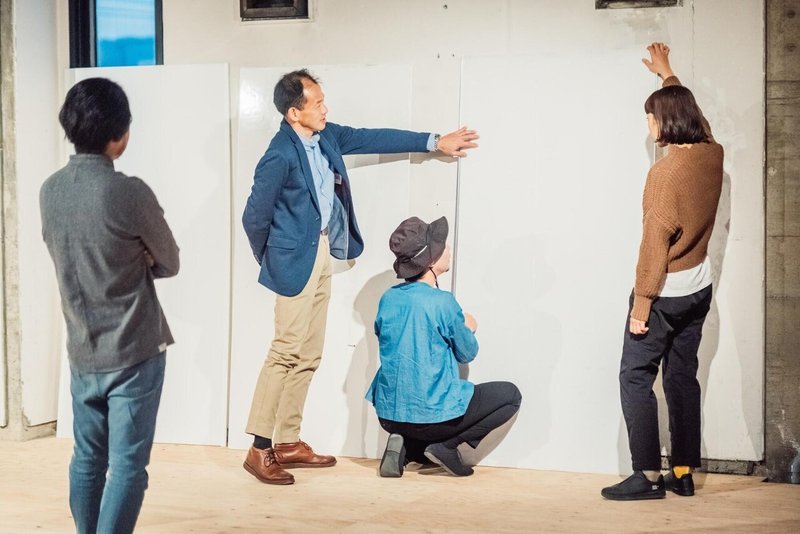
Ishida: Generally, everyone will leave the documents/post-its on and keep the boards. This results in one having to “secure a board” before actually getting to use one. There are always supposed to be at least ten boards in the office, but even after deciding on a set place to store them, they just keep disappearing day by day.
2. The commercialization of a familiar board
ーDo you remember when you first heard about the idea of “ideaboard”?
Yamamoto: I do. I think it was when we saw the first prototype in a studio in Tenma, Osaka. I was there for a different reason but he showed it to us and I remember thinking, “He made it into a product!”
ーHow did you use the prototype when it was installed in your agency? What kind of feedback did you give?
Yamamoto: In terms of usage, it was mainly putting up documents and pasting ideas. However, I do believe ideaboard’s characteristics caused us to write more.
As for feedback, I remember discussing how the stand holding the board up was a bit unstable. It was preferable that we didn’t have to secure the board with one hand while writing on it with the other, but we also needed for it to be light to carry around. It appeared to be self-standing, but it wasn’t stable enough. Consequently, we usually used it by tilting it against the wall.
Ishida: Personally, I wanted to position the ideaboard horizontally so that it would be at the same height as my eyes when I sat, so I set it up on top of my bicycle by twisting the handle 90 degrees and placing it on the handle post and seat. I wanted to be able to come straight back to my desk and jot down ideas after team meetings, and I thought using the ideaboard this way would increase my productivity.
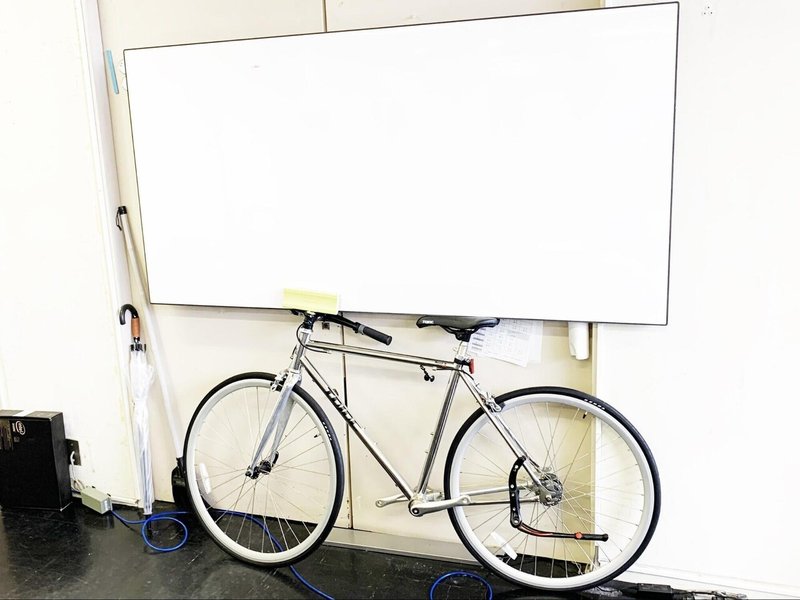
ーYour agency’s walls are now all made of whiteboards. How do you make use of the ideaboards or portable corriboards?
Ishida: Since the space on the whiteboards is limited, you end up using the extra boards when you want to work near your desk. We have quite a lot of corriboards and ideaboards lined up in our office.
Yamamoto: Contrary to the whiteboards that we’ve used up till now, we do find great merit in being able to easily turn the boards around when necessary. We occasionally have outside visitors coming in for machine maintenance and so on, so it’s convenient to be able to quickly hide any confidential information.

3. The key to product development: steady problem solving and the drive that will get others involved
ーWere there any elements you found particularly impressive while observing the development of ideaboard?
Yamamoto: It was when they had arrived at the stage of manufacturing. After having struggled with the complicated issues that arose during the manufacturing process, I remember Nagasaki-san coming to me with excitement in his eyes that he’d found a manufacturer that would solve all problems. I thought that it was very, him.
As designers, we may be fairly good at bringing life to dreamy solutions or creating ideas that haven’t existed before. However, on the other hand, we struggle in the process of realizing these ideas. This is because we need to take into account the various technology and distribution channels, etc. What’s impressive about KAIMEN is that they are designers, but have the capacity to take every step of the process into their own hands—to be able to apply the idea into a product, and build a profitable business.
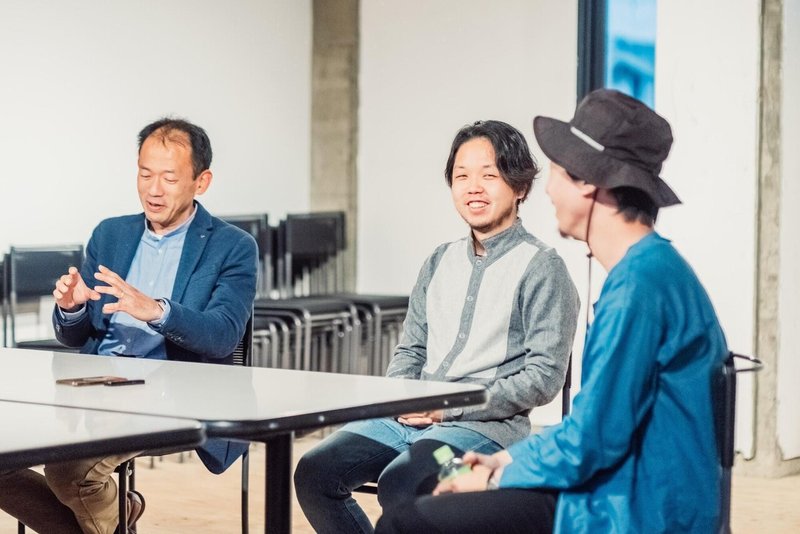
Ishida: I myself didn’t see much of the struggle they went through when developing ideaboard. I was rather drawn to how they shined through it all, especially when they showcase their work or explained how to use the prototypes and so on. Although I reckon they did have their ups and downs—running around and being trapped in the midst of it all.
ーFinally, do you have any comments on what you expect from KAIMEN or ideaboard in the near future?
Ishida: I feel KAIMEN’s way of operating in small numbers and making full use of the team’s talent fit with the current times, and I’m glad to be able to witness their activities so closeby. On the other hand, they also have essential connections in the industry and a stable foundation that won’t make their projects die out after one big shot. They have both aspects, and I feel that’s what makes them work.
Also, I’d like to connect and work with different people through KAIMEN’s projects. There is so much talent out there that we just can’t find inside our agency, so I’d like to learn from them and bring back my learnings to GK.
Yamamoto: When Nagasaki-san was working here, there was this inevitable vertical relationship, but now working with him as our client, there’s so much that I learn and am stimulated by. Nagasaki-san has a talent for firmly stating his own opinion while also getting others involved. He will notice other people’s talents that they haven't even recognized themselves and will get them on board at the necessary time. I expect KAIMEN to have other partners that will become a source of inspiration. In that sense, rather on an individual level than business, I myself would like to be one of those individuals that can perform what is needed when the time comes.
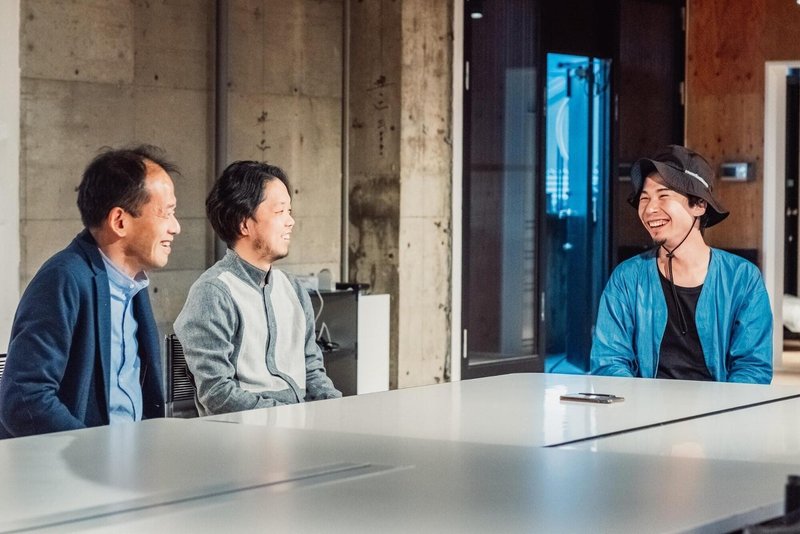
To be continued in “ideaboard Series: Product Development Story #10”
(Interview by Mone Nishihama, NINI Co., Ltd., translation by Kyoko Yukioka, NINI Co., Ltd., and photos by Yukiya Sonoda)
▼Click below to see the original Japanese version / 原文はこちら
この記事が気に入ったらサポートをしてみませんか?
